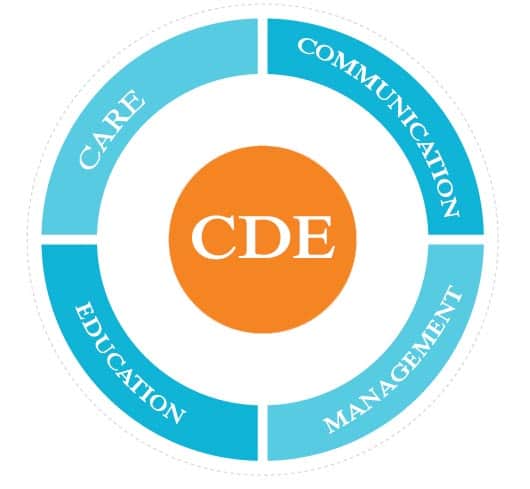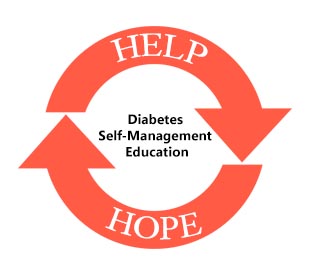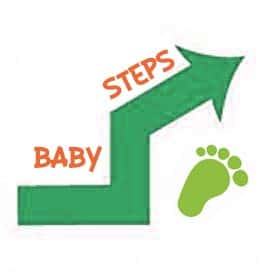 I am a Certified Diabetes Educator.
I am a Certified Diabetes Educator.
How did I get here after 22 years in nursing, and why did I pick diabetes for my specialty? The answer to that starts way back in high school, 35 years ago.
My experience with diabetes started when I met my best friend, Kelly, in high school. We were starting our junior year. We hit it off famously in assembly. She was one of the few people that I can ever say truly gets me.
I started to go over to Kelly’s house in the afternoons and to spend the night some on weekends as teenage girls do. The first time I saw her give herself a shot, I was shocked. She said she had diabetes.
Contents
- Memories of why I am where I am today
- Early experiences working with diabetes patients inpatient
- Learning about PWD’s life at home as a home health nurse
- North Carolina public health and becoming a CDE
- Diabetes Self-Management Education classes = help and hope
- Start where the patient is, and make baby steps
- Over to you
Memories of why I am where I am today
My father was a doctor, so I questioned him at home. “What is diabetes,” I asked.
He said it was pretty bad, and that Kelly had it for a long time already. He said she has to give insulin shots or her blood sugar gets high. He said that if she is acting confused or sweaty when I’m with her, I should give her some juice.
That was the extent of my knowledge of diabetes. Kelly missed first period many times during our junior and senior years in high school. Usually she missed on a Monday, after we had a weekend of parties where Kelly probably drank too much alcohol and didn’t eat anything.
I wonder now how many low blood sugars she had as a result of those teenage nights out.
Time went on. I didn’t really know anyone else with diabetes. I got my Bachelor of Arts in English at St. Andrews Presbyterian College, with a 1 year stint at the University of North Carolina at Wilmington in between to save some money on tuition.
Following college, I worked for several years as a reporter for the Concord Tribune in Concord, NC. I moved to Florence, SC, to work for The News and Shopper there. That’s when I decided to return to school, and obtain a degree in nursing.
Early experiences working with diabetes patients inpatient
I graduated from nursing school in 1992, and worked on a busy medical-surgical and vascular surgery floor. There, I came into contact with many diabetics that were suffering.
The patients with diabetes would come in with a non-healing ulcer. The vascular surgeons would perform a femoral-popliteal bypass surgery. As the nurse, I would check the patient’s circulation with a Doppler. I would assess the blood flow, and provide wound treatments and medications, including intravenous antibiotics.
The patient would go home. Several months would go by. The patient would be admitted back into the hospital. The diagnosis would be “failed femoral-popliteal bypass surgery.” The procedure scheduled would be (R) BKA (Right Below the knee amputation).
The patient would have the amputation. They would go to the rehabilitation facility. There they would get a prosthetic leg, and the physical therapists would teach them how to walk again with their new leg, and an assistive device such as a walker.
They would go home, and get home health for a while. Then about six months to a year would pass. They would be admitted into the hospital again. This time, they would have an infected stump, because the circulation to their stump area was not enough to sustain blood flow to the area, and they would need to have an above the knee amputation.
I saw countless people with diabetes go in and out of the hospital with this same scenario. I would think about Kelly, and worry that she might be having the same types of complications.
When I spoke with her, Kelly had not had an amputation, but she did suffer a stroke in her 40’s, and was declared legally blind, all due to her diabetes.
Learning about PWD’s life at home as a home health nurse
After I worked at the hospital for several years, I moved in to the state home health realm in South Carolina. There, I worked with many of the same people with diabetes that I had seen in and out of the hospital over the years. I had a different perspective when I saw them in their own environment.
I would prepare care plans for them, and provide daily wound care if needed in their home. During the early 1990’s, we were allowed daily visits, and we could even go in to the home to pre-fill insulin syringes for a person with diabetes who was blind, for example.
I suggest these informative pieces regarding diabetes:
Donald Ray
One such person was Donald Ray. He made a strong impression on me. He was the picture of what home health nurses called, “noncompliance.”
When you drove down Lake Russell Road, all of the houses on that road were nice, well-kept homes. All, that is, except for Donald Ray’s house. His house was a small 2 room shack with peeling paint.
Donald Ray didn’t bother himself much with “nonsense such as exchange lists.” Back then, we didn’t teach carbohydrate counting. The concept of exchange lists was a little more difficult to grasp.
Donald Ray took the attitude that he had lived longer than the doctors ever thought he would, so he was going to do what he wanted to. If that meant going to the Dry Dock Seafood buffet, or eating a whole box of Little Debbie cakes, then so be it. He wasn’t hearing it.
If nurses, myself included, tried to teach Donald Ray anything about diabetes, or give him advice about his diet and nutrition, he would fire them. He would let one male nurse come and see him, but only because he let him do what he wanted to do, and even sometimes brought him some Little Debbie cakes.
Pansy
Pansy had a diabetic foot ulcer. The enterostomal therapist and I would go to see her, and we would make recommendations to the doctor about the wound care that we hoped we could eventually have success with. We tried several different things, and finally started seeing some good granulation tissue growing in her wound bed, a sign that she was starting to heal.
Her blood sugars were down and everything was going better, or so I thought.
I came to Pansy’s house. It was painted “haint blue.” This is to keep the “haints” or ghosts out. It’s an old superstition that stems from Gullah culture around Charleston, SC. One time I dropped something under Pansy’s bed and looked under it. There was the biggest Vidalia onion under there.
I said to her daughter, Pokey, “Hey, Pokie, why do you have an Onion under Pansy’s bed?”
“That keeps the devil away, and then her leg will heal,” she said matter-of-factly.
“Oh,” I said, trying not to make any expression. I kept cleaning Pansy’s wound.
Pokie said, “Now Ms. Chris came by and she said that you were pregnant.”
I said, “Yes ma’am, I am. I’m due in March.” I halfway expected to be congratulated.
Pokey said, “That’s why I got the onion under Mama’s bed. You are pregnant, and you are going to bring mama’s foot bad luck. Mama’s foot can’t heal with a pregnant woman docterin’ it.”
Nevertheless, on Monday, I spoke with my supervisor and asked if Chris or one of the other nurses could see Pansy since she has a deep belief in a superstition that a pregnant woman could not heal her.
There were many other people with diabetes that I worked with in their homes though my position with the state home health in SC. The damage that losing limbs, having to go on dialysis three days per week, loss of memory due to early strokes from diabetes and more can cause is devastating to patients and families.
North Carolina public health and becoming a CDE
It was these experiences that brought me to the North Carolina public health realm to teach the Diabetes Self-Management Education (DSME) classes at a local health department, I fell in love with helping people with diabetes even more. I decided to specialize in diabetes, and to become a Certified Diabetes Educator (CDE).
I obtained my CDE in December, 2015, after working in the DSME program and teaching classes for 1,000 hours of diabetes education. I love the progress that I see in my patients. You can really see and document the changes, as they move toward living healthier with diabetes.
I love that by the end of 10 hours of DSME, patients are able to work on goals that lead them to a reduction in A1C, blood pressure, cholesterol, and weight. I see an increase in their overall activity, as they strive to get their 150 minutes of physical activity in a week.
Patients tend to get a sense of well-being when they are successful at self-managing their diabetes. They are motivated to continue to live healthy with diabetes, and they are able to dodge terrible complications.
You see the light in a patient’s eyes as they see that there are some simple changes that they can make in their plans to better manage, and that better self-management makes them feel so much better. They experience fewer feelings of hopelessness and depression related to their diabetes.
My patients back in the 1990’s were experiencing many more complications of diabetes than my patients are now in the year 2016. Medication options abound, as do programs to help patients with diabetes learn to manage and achieve a measure of success which inspires them to keep going on a steady and even path.
Technology advancements have afforded new insulin pumps and continuous glucose monitors that make management easier and possible today. SMART phone apps are in abundance, and make it possible to keep track of nutrition, exercise, blood sugars, and the like.
Diabetes Self-Management Education classes = help and hope
I love how DSME classes are so varied and interactive. When you get several people with diabetes in a room together, a magical thing happens. They feel the support from the others who they sense have the same issues. They tend to share frustrations, and talk things out.
Patients tend to learn from each other in the DSME classes, and they benefit from hands on with portions, plate method, carbohydrate counting, and exercise. We generally eat lunch, and then we take a walk. At 2 hours past the lunchtime, we check blood sugars.
Following the lunch that is the appropriate amount of carbohydrates, and the walk several times around the building, patients see firsthand how eating the right amount of carbohydrates and exercising along with their medication, gets their blood sugar into the target range of less than 180 mg/dl.
It is this kind of “Ah-ha” moment that helps me get them motivated and excited about getting their diabetes in control.
One man in class tickled me when he said, “Listen to her. It’s not hard. I did what she taught me, and now I am at 6.6 A1C. She gives you simple steps to take, and it works! Diabetes need not define you!”
I am usually able to find one person in class who helps me to motivate others. I find it helpful to find out what actually does motivate a person to make change. Do they want to take their grandchildren to Disney World, but their uncontrolled diabetes makes it hard for them to have enough energy? Diabetes education can help them get there.
It’s helpful to know where they are at with readiness to learn when they come in to receive education. Then you can know where to try to take them with the first step.
Start where the patient is, and make baby steps
One man eats Big Macs and super-sized fries every day. It’s evident he should make better choices at McDonald’s and avoid McDonald’s more often if not altogether, but trying to get him to go from a Big Mac combo to a vegetarian tofu salad is probably not going to happen.
So you start where the patient is, and you take baby steps. The patient agreed to do a grilled chicken sandwich and a side salad from McDonalds 2 out of 3 times he goes to McDonalds. This may not seem like much, but it cuts out 2- high fat Big Macs per week (and a whopping 55% of daily allowed saturated fat), and then we can work on getting this patient to cut some more out the next week.
The next week, the patient agreed to cut out the French fries when he did get the Big Mac, and drink water instead of soda. Sometimes you have to build upon what a patient is willing to do, and meet them in the middle.
I live in the South, and one man drank sweet tea all day. He was only willing to give up 2 glasses of tea per day, and switch to water instead for those 2 glasses. Just with that, he saw a modest decrease in his blood sugar, which prompted him to cut out 2 more glasses the next week, and eventually switch to all water and get his A1C in control.
You must meet the patient where they are, and tailor instructions to motivate them to make one small change per week. After 10 weeks, the cumulative effect of small changes weekly adds up to big differences in lab numbers for the better.
For further reading:
Patients start to feel better, wounds heal faster, pins and needles feelings in their feet and hands go away, and they feel less fatigue on a day-to-day basis. It is then that they see the value of their diabetes education and self-managing their disease.
Over to you
We invite our readers to share their perspective on how their CDE has motivated them to learn to live healthy with diabetes. How can CDEs better facilitate the process of self-managing diabetes? What tips or tricks did your CDE teach you that proved to be valuable to you? What kinds of changes did you see in your own health by receiving diabetes education from a CDE? If you have diabetes, and you have not ever received formal diabetes self-management education through an accredited program, you can access available CDEs and program information for your area by visiting the AADE (American Association of Diabetes Educators) at https://www.diabeteseducator.org/patient-resources/find-a-diabetes-educator.
If you have any comments please post them down below.
TheDiabetesCouncil Article | Reviewed by Dr. Sergii Vasyliuk MD on June 05, 2020
References:









